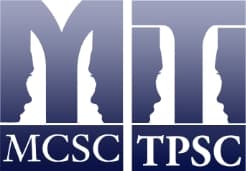While the goal of breast augmentation in Toronto is to achieve the desired breast enhancement with one procedure, a percentage of patients will eventually wind up undergoing a second surgery. Usually, a second surgery is carried out many years after the first, and the most common reasons for this are:
1. Development of a capsular contracture
2. Deflation of an implant
3. Development of sagging and elongation of the breast with time, often in association with placement of large implants
Capsular contracture, the most common reason for a revision surgery, is the development of thickened scar tissue around a breast implant. This can lead to discomfort and a stiff, less natural feel to the implant
Deflation of an implant, which occurs because of rupture or leakage, is most obvious with saline implants, where shrinkage of the breast will occur rapidly over hours. In the case of silicone gel implants, rupture may require MRI imaging to detect.
Sagging and elongation of the breast happens as a part of aging and will be exacerbated in individuals who have large fluctuations in weight, and whom smoke. However, a cardinal contributing factor is the initial placement of overly large breast implants at the time of the first surgery. Large implants, over time, can cause thinning and laxity of the overlying skin, with increased visibility of the implant and rippling. These are some of the reasons why the decision about the size of an implant are so important in the initial surgery, and why I tend to more conservative recommendations with respect to the size of implant in the first place. In the United States, FDA statistics suggest a full 37% of breast implant revisions are due to an initial large implant size.
Other reasons for breast implant revision surgery include patient dissatisfaction with implant size, ie some patients will opt to revise to larger or smaller implants, and a subset of patients will opt for repeat surgery because of complications resulting in an undesirable result (ie implants that ride too high, or too low, asymmetric results, or other complications such as “double bubble” or “snoopy” appearance to the breasts).
Regardless of the reason for undergoing a revision of breast augmentation, the process starts with a detailed consultation with your surgeon. This will give you the opportunity to discuss at length the reasons for the revision. It is important to let your surgeon know what issues you have had with the previous surgical result, and also to discuss what result you wish to achieve with the second surgery, including what shape and size you would ideally like to be. After a physical examination in which your surgeon will evaluate the previous implants, carry out measurements of your chest wall, and assess your skin quality, he will make recommendations as to how best to proceed.
Often, to achieve an improved result the second time around, it is advisable to opt for a different “pocket” for the implants in a revision surgery. This means that if you previously had implants placed above the muscle, it may be recommended for you to go below the muscle in the second procedure, and vice versa.
It is also generally true that many surgeons will prefer an inframammary approach, with an incision below the breast, in the crease, for revision surgery. This is because other approaches, such as periareolar, or through the axilla, will not give the surgeon sufficient visualization of the previous implant and the tissues.
There may also be specific considerations in revision surgery that could prompt your surgeon’s preference for a particular implant. For example, smooth implants are presently the most popular choice for first-time breast augmentations. However, in an individual who has developed capsular contractures, there may be good reason to choose a textured implant the second time around, especially if one is going above the muscle. There is literature to suggest that in this location, textured implants are less likely to be associated with contracture.
As mentioned, some women entertain a second breast augmentation surgery because they are not happy with the size of their bust after their initial procedure. Some women request placement of larger implants. This may be an option, but it is not always possible. The maximum size of implants for a given individual is limited by that person’s chest dimensions. If a larger implant size is not feasible, another option may be to replace the implants with ones of a higher “profile”, in which projection from the chest wall is greater, thereby giving the impression of a larger breast size, even though the overall breast volume remains the same.
It is also important to recognize that, the second time around, it may be necessary to undergo a breast lift. This is especially true in women who have developed drooping, pendulous breasts after undergoing previous placement of large implants. Even when drooping is not extreme, in those who have decided to go with significantly smaller implants for their revision, a lift may be necessary. Sometimes, when implants have been placed sub-glandular (above the muscle), they may not sit high on the chest wall, and a breast lift may be necessary to give the elevated appearance a patient is wanting.
For any breast surgery, it is, of course, important to choose a surgeon who has specific expertise, and this is doubly true for breast augmentation revision surgery, where there are unique challenges and increased complexity. As an experienced breast augmentation revision surgeon, I like to have an extensive discussion with my patients and lay out all their options. The good news about revision surgery is that, as decades go by, newer, better implants and techniques are being developed, which will hopefully mean more options and improved outcomes as time goes by.
If you think you may be interested in breast augmentation revision surgery, contact us at (905) 273-3045 (Mississauga) or (416) 207-9090 (Toronto) to book a consultation.


Leave a Reply